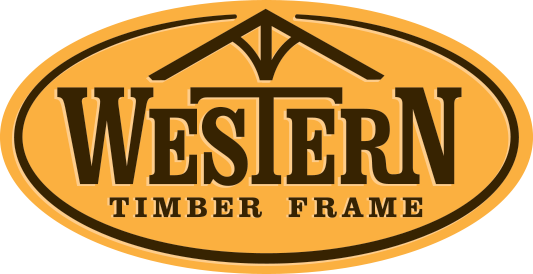What Can Be Done to Prevent Checking in Over Sized Timbers?


This is a question we get at times. The answer to the question?
"Nothing. This is a good thing."
It is a natural characteristic of wood to display checking. Checking of wood is a lengthwise separation of the wood as a result of seasoning that usually extends across and through the rings of annual growth, often called "seasoning checks".
Wood dries from the surface to the center. As the wood begins to dry, the outer layers dry faster than the inner core it begins to shrink in the radial and tangential directions of the wood. In every species of wood, a logs shrinkage occurs more in a radial and tangential direction than it does in he longitudinal direction.
Checking in wood can occur in green or dried lumber, logs and final products during the drying process, storage, manufacturing and end use. Many factors in the wood such as the wood species, the moisture content, the process of drying, the storage method, temperatures and humidity, sun and air flow, etc. play a part in seasoning checking.
In small lumber, containing lower than 40% moisture content, it is nearly impossible for the wood to check unless subjected to extremely dry conditions. In thinner standard-size lumber, checking, or seasoned checking can more readily be controlled. The thinner the wood is, the easier it is for it to dry. A wood piece as large as a 8/4 or even 10/4 is thin enough that it will dry more evenly. As the thickness is increased to let's say, a 12/4, that additional cross sectional area of the original log changes the margin of checking. In our timber frame shade structures we have posts starting at 6" x 6" and some that have been as large as say, 17" x 17" timbers. This kind of timber mass it is going to naturally have more checking.
Again, with the mass of insulation around the center of the timber, it does hold moisture for a longer time than the outer layers do. As the surface layer dries and shrinks with the moisture from the inner core, it has no other choice but to crack. There is no way to prevent checking. If you do not see any checking, then there could be a greater problem, such as a core that has rotted.
Various species of woods will check differently. Ipe (pronounced ee-pay) used primarily in cabinetry, decking and flooring extremely dense, three times as hard as Cedar. Yet, both Ipe and Cedar will check far more than a fiber compressed wood such as Douglas-Fir. The larger the mass of wood the more it is going to open up. In denser woods, like Ipe wood, the checks may be smaller and not very deep. However, in species that are less dense, such as Douglas-fir, you will commonly see wide-open, deep-seated checking.
The the most important thing to remember is that the checks in these large oversized timbers do not affect its structural integrity. It is in fact usually made stronger by the release of tension that has built up within the log.
Because checking is inevitable in timbers, Kerfing has sometimes been done as a method to minimize checking by Kerf cutting along the piece of timber as a release point. Kerfing is an old technique. It does work but it will also leave a cut on one side. Even if you can hide or reface the cut, the draw backs with the kerf cut approach is that it requires cutting the timber before it begins to dry. When you are working with a large timber, it has already been kiln or air dried for a lengthy time. Most manufacturers do not have the material in their hands that early in the modus operandi.

The timber does not usually begin to check until after it has been installed on the outside of a home, deck or over a patio, exposed to intermit weather and its new environment. Even after many years down the road, a homeowner can sometimes hear a timber crack or open up and not understanding the nature of timber can believe they have unsound timbers. This is the reason so many manufacturers and contractors try to educate people to the nature of timber. Timber is the same today as it was hundreds of years ago. Wood moves and there are timber structures still in use today from hundreds of years ago, with beautiful checking and are structurally sound.
When considering timber, especially timbers in the outdoors, the timbers will continue to expand and contract. This is why we do not highly promote filling the checks with epoxy etc. Loving natural timbers, checking should be cherished as a unique expression of natural beauty.



Leave a Comment